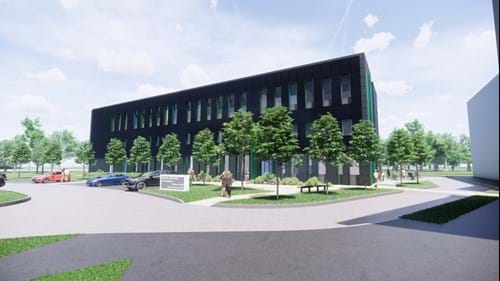The flagship, green facility will provide flexible office space for start-up companies and growing local businesses with a focus on the research and development and innovation sectors, although this won’t be exclusive.
The technology centre forms part of the council’s Supporting Innovation and Low Carbon Growth programme due to be part-funded by the £1.3 billion Swansea Bay City Deal. The programme aims to deliver low carbon, sustainable and inclusive economic growth for the Swansea Bay City Region.
The new technology centre will complement the existing, adjacent Baglan Bay Innovation Centre and will continue the growth of the Baglan Energy Park and the wider Port Talbot Waterfront Enterprise Zone, which stretches from Harbourside in the town’s docklands to the Energy Park.
The Waterfront Enterprise Zone, with its close links to rail transport and the M4, aims to strengthen Neath Port Talbot’s viability as a destination to live and work, as well as meeting demand for office, laboratory, digital and general business accommodation.
Technology centre construction is expected to take 12 months. When built, the centre will continue the focus on renewable energy - particularly hydrogen – which will help enable innovation, research and development.
Morgan Sindall Group Plc has been appointed to design and build the new technology centre.

Cllr Annette Wingrave, Neath Port Talbot Council’s Cabinet Member for Regeneration and Sustainable Development, said: “By constructing this hybrid technology centre building of around 2,500 square metres of high-quality flexible office space in a strategic employment site, the project will support and encourage the growth of jobs in strategic sectors identified in the region - both start-ups and indigenous businesses. This will lead to growth in jobs and increased value for the region’s economy.”
The overall Supporting Innovation and Low Carbon Growth programme is estimated to be worth £6.2 million a year to the local economy once all projects are operational. More than 1,300 jobs will be created or safeguarded, with at least 30% of these to be new.
